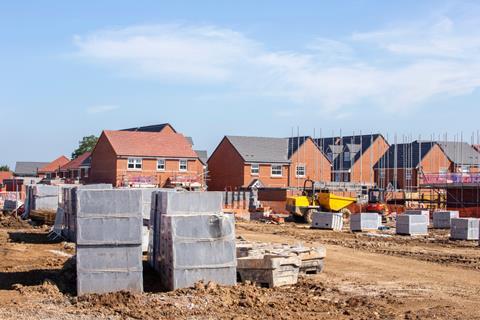Purchasing managers’ data shows rate of decline eased slightly in February
Housebuilding activity continued to decline in February amid a “subdued” market, albeit the workload drop was slightly less severe than in January, according to the latest purchasing managers’ data.
The index compiled for the Chartered Institute of Purchasing and Supply by S&P Global recorded a figure of 47.4 in the month for housebuilding activity, where any figure below 50 represents a decline in workload.

This was its third consecutive month below the key 50 number, but an increase in the 44.8 figure recorded in January - which was the lowest number since May 2020 in the depths of the first covid lockdown.
The monthly report from the CIPS said that the housing index number reflected a “subdued market conditions due to elevated interest rates, alongside cutbacks to new house building projects in anticipation of weaker demand.”
However, the continued drop in activity came as the group said construction work as a whole picked up in the month, with total construction orders increasing at their fastest pace for nine months.
Total activity rose from 48.4 to 54.6 month-on-month, the strongest rate of growth since May last year.
The figures are a stark contrast with the previous month’s, which recorded the fastest fall in activity since the first covid-19 lockdown, which began three years ago this month.
Tim Moore, economics director at S&P Global Market Intelligence, said client confidence had been improved by “fading recession fears and an improving global economic outlook”.
“Construction companies appear increasingly confident about the year ahead business outlook, with optimism rebounding strongly from the lows seen in the final quarter of 2022,” he added.
The latest survey also indicated improved supply and a slowdown in input cost inflation, with the overall rate of purchase price inflation the lowest for 27 months.
Nevertheless, Brendan Sharkey, head of construction and real estate at accountant MHA, said the picture from the housebuilding sector showed UK construction remained on the cusp of a slowdown despite the “strong month” in February. He said: “In reality, the picture is very mixed. Some construction firms are coping well, and some aren’t.
“The London market feels like it is heading for a slowdown and all the big house builders forecast contraction over the next year.
The UK construction sector ended its two-month decline in February as fears of a predicted recession began to fall away.
Max Jones, director in Lloyds Bank’s infrastructure and construction team, said the return to growth would be further boosted by an optimistic Budget next week.
“While few expect the chancellor to pull any rabbits out of his hat, clarity around future projects, particularly in the regions, will give contractors the confidence they need to plan and invest in the future,” he added.
Mark Robinson, group chief executive at procurement body Scape, said: “While it’s encouraging to see construction activity pick up again after a sharp decrease in January, unpredictable new business pipelines remain an operational challenge for firms to manage effectively.
“Recent news that government departments collectively spent £24bn less than forecasted might raise hopes of a last-minute public sector spending spree by the chancellor.
“However, it’s more likely that delivering real-term cost savings is going to be the mandate for local authorities, and contractors will play an important role in helping them to achieve this.”










No comments yet